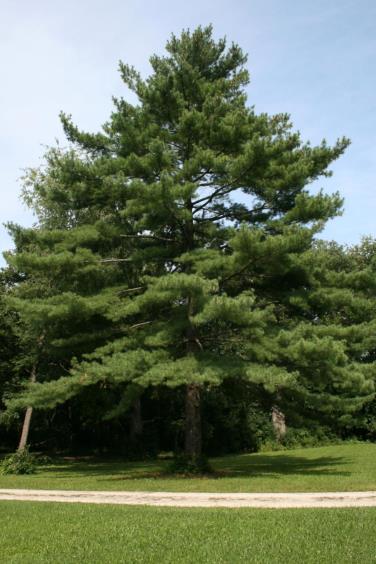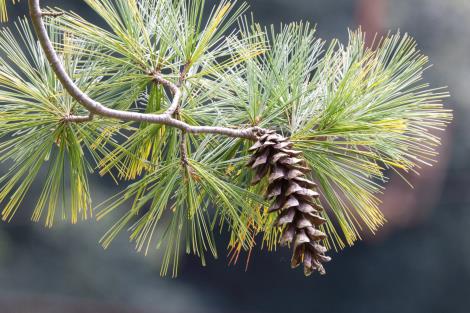
Although common in the landscape, eastern white pine makes an excellent specimen plant or background plant for smaller trees because of its evergreen foliage.1
This evergreen is an excellent ornamental tree but will not thrive if growing conditions are not optimal.1 The quality of the wood and the long straight stems have made it ideal for many uses, particularly as shingles and ship masts.1
Alarmed by the colonists’ “timber stealing” from the crown’s land, William and Mary decreed that the best specimens were to be saved for the Royal Navy and their agents marked those trees with the royal emblem. The colonists’ anger toward Britain’s intrusions was fueled by these visible reminders and the ownership of the white pine trees was a major motivating factor for the American Revolution. After independence was obtained, the reckless exploitation of the towering white pines started in New England and moved through the Great Lakes states. 1
The branches grown in circles around the tree, with soft pliable needles in sets of fives.2
- Eastern White Pine. University of Kentucky College of Agriculture, Food and Environment. https://www.uky.edu/hort/Eastern-White-Pine. No Publication Date. Accessed January 23, 2024.
- Pinus strobus. North Carolina Extension Gardener Plant Toolbox. https://plants.ces.ncsu.edu/plants/pinus-strobus/. No Publication Date. Accessed January 23, 2024.
- https://mortonarb.org/app/uploads/2020/12/59092_ca_object_representations_media_23402_large-0x1920-c-default.jpg
- https://images.squarespacecdn.com/content/v1/5d3dcac9c17295000138b017/1614890054579SB0LWKUG4LPE8OKUSDKL/44908690861_1550aa4765_k.jpg
- https://ssl.c.photoshelter.com/imgget/I0000QkFuk.fbVPo/s/600/600/TK9-706025.jpg



